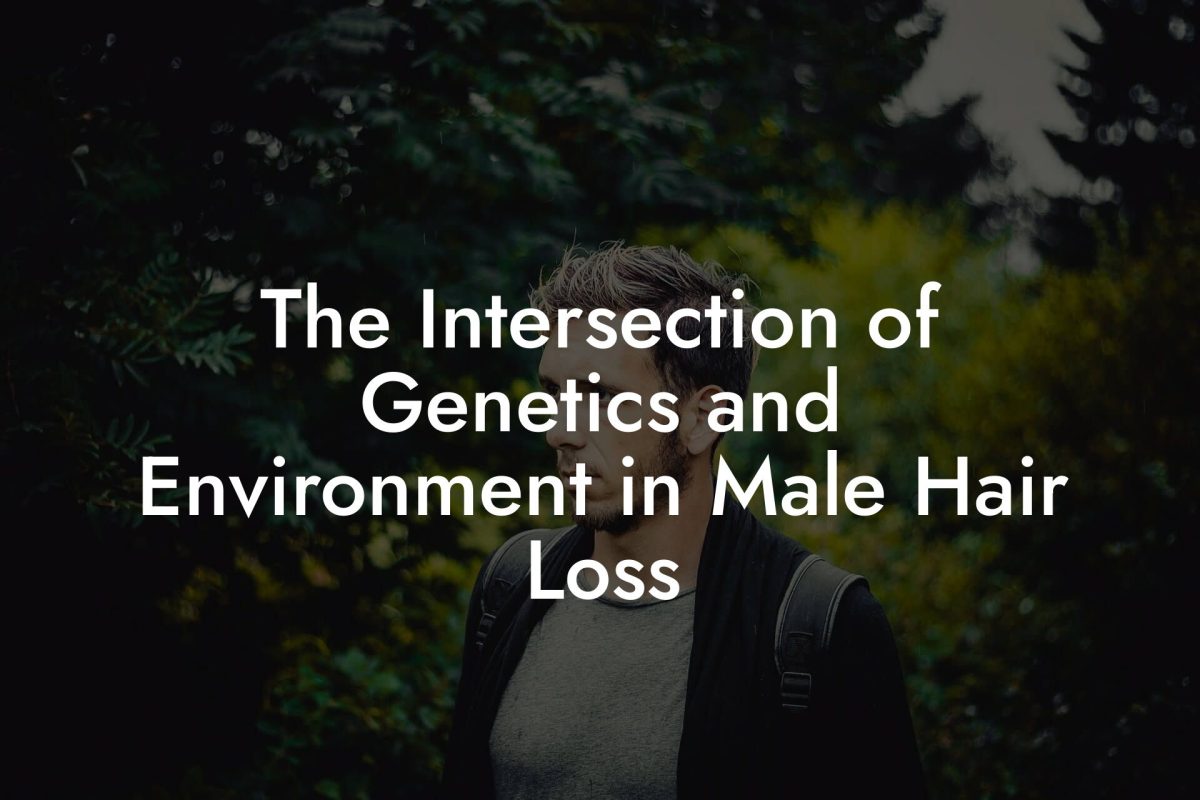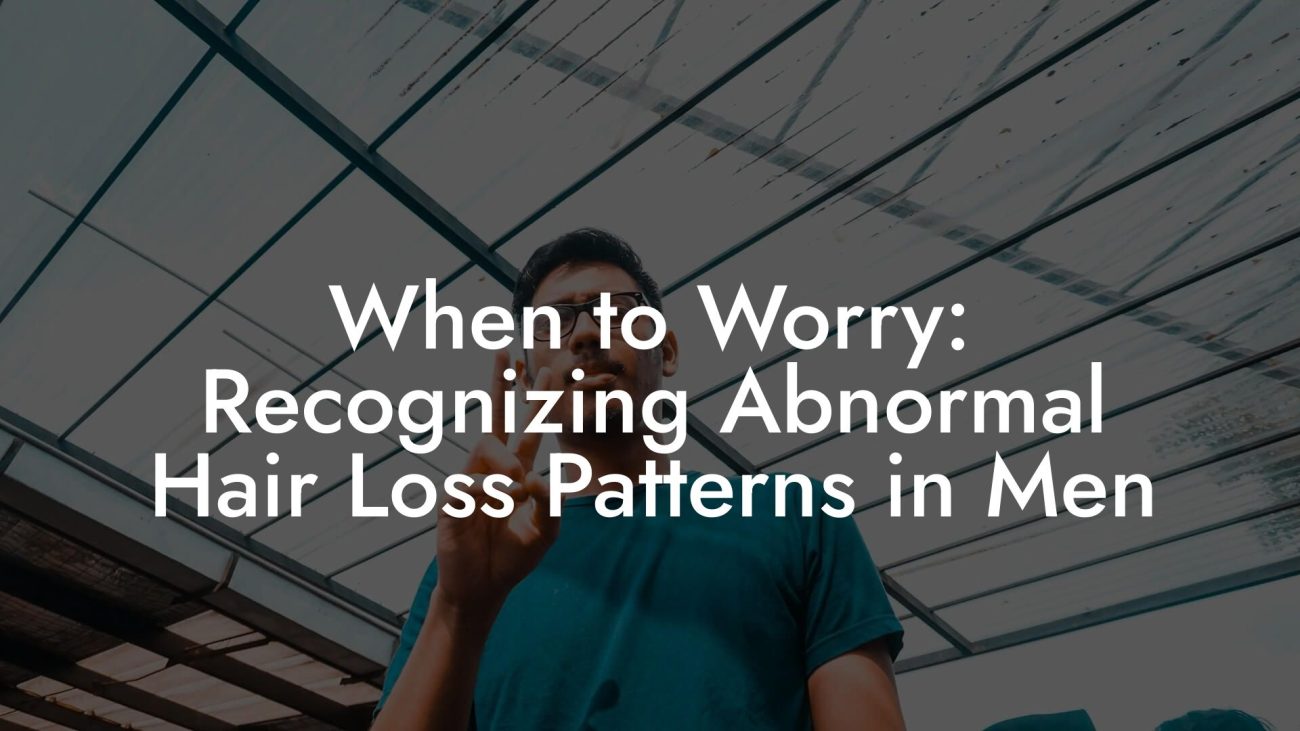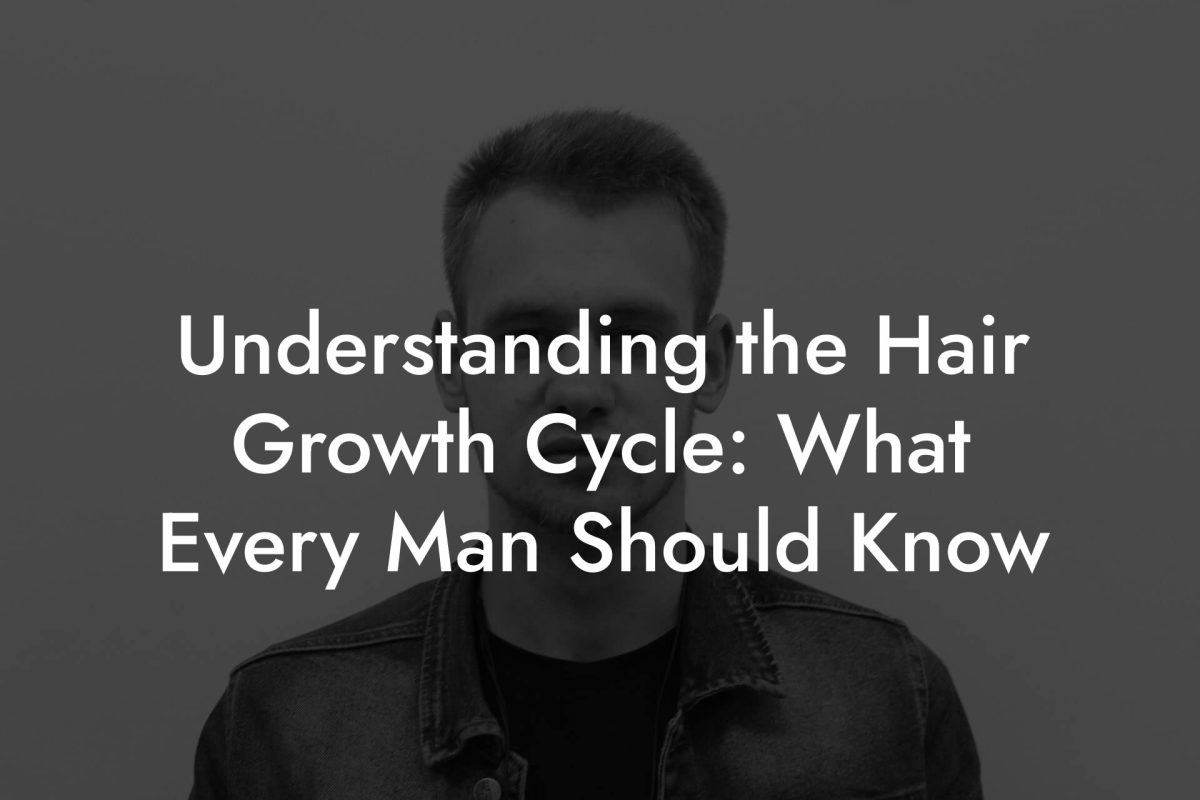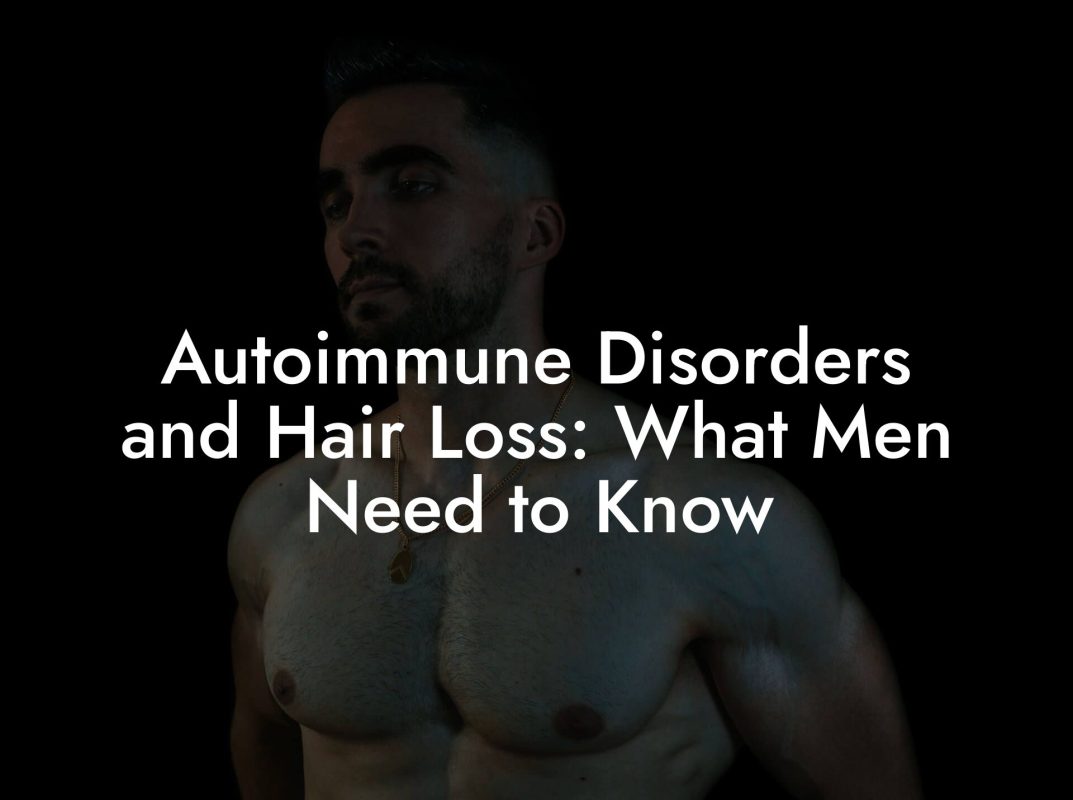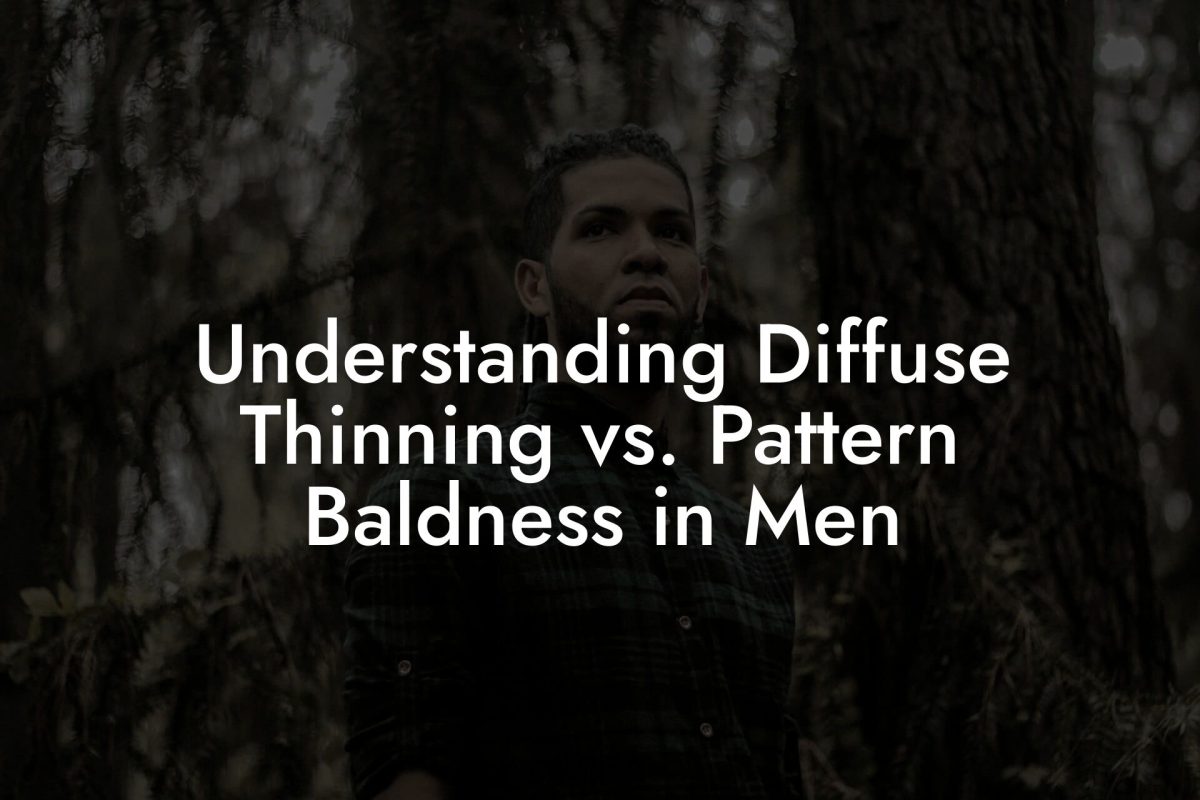Hair Loss Library
Innovative Research: The Future of Hair Loss Studies for Men
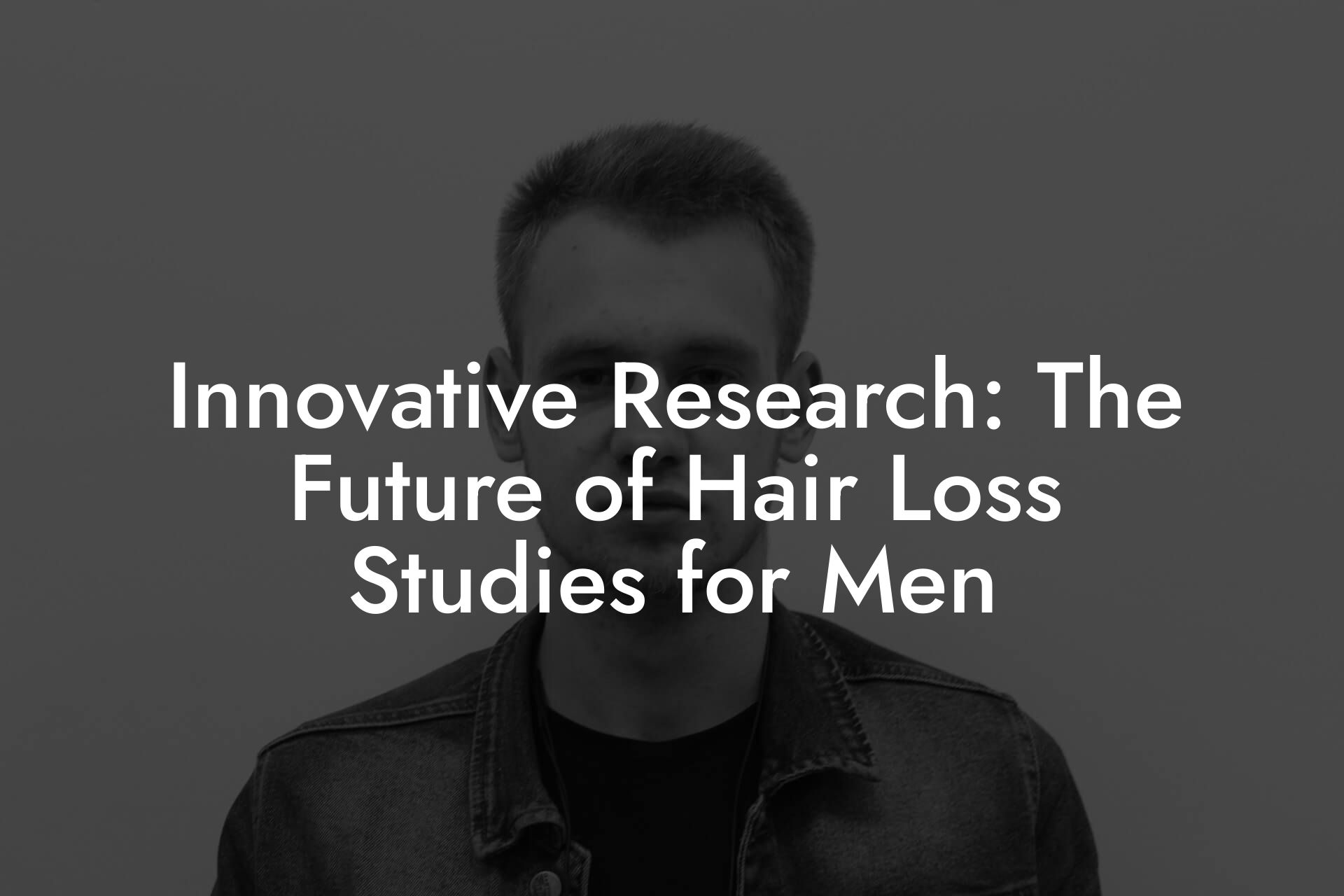
In a world where science is catching up with our wildest dreams—and sometimes even our receding hairlines—innovative research in hair loss studies for men is not only fascinating, it’s downright game-changing. Whether you’ve noticed more scalp than hair or you’re simply curious about the next breakthrough in hair regrowth, this in-depth guide on the future of hair loss studies is your backstage pass to everything from mind-blowing genetic discoveries to non-invasive, high-tech solutions that are redefining men’s hair health. Welcome to Mane Matrix’s ultimate resource, where expertise meets a no-nonsense, human approach, so you can say goodbye to embarrassing and expensive consultations once and for all.
Understanding the Landscape: What’s Driving the New Era of Hair Loss Research?
Gone are the days when men accepted thinning hair as a one-way ticket to baldness. Today’s research is fueled by a blend of cutting-edge technology, groundbreaking genetic studies, and an understanding of how modern lifestyles impact our locks. Innovative research isn’t just about patching up symptoms—it’s about decoding the mystery of hair loss and finding proactive, personalized solutions.
At its core, hair loss research delves into the science of what makes hair grow and why it sometimes stops. Researchers are exploring every nook and cranny, from hormonal imbalances and environmental stressors to the tiny messengers within our DNA. With a focus on men’s hair health, modern studies are combining traditional medical approaches with tech-savvy analyses and even artificial intelligence to create treatments that are as precise as they are revolutionary.
Whether it’s uncovering the secrets hidden in your genes or harnessing the power of stem cells to reboot your hair follicles, the future looks as vibrant as a full head of hair. And let’s be honest, when the confidence boost is real and sustainable, who wouldn’t want to stay ahead of the baldness curve?
Breaking Down Hair Loss: The Science Behind the Strands
To truly appreciate the strides being made, it’s important to understand what causes hair loss in the first place. Male pattern baldness, medically known as androgenetic alopecia, is influenced by genetics, hormonal factors (like the notorious dihydrotestosterone or DHT), and even our environment. But here’s the kicker: researchers are now looking beyond these traditional culprits.
Modern studies are exploring a multi-dimensional approach, investigating how factors such as stress, diet, and even sleep quality affect scalp health. The concept is simple yet profound—the health of your scalp and the vitality of your hair are deeply intertwined with your overall well-being. In many ways, your hair is a barometer of your internal health, alerting you to imbalances before they become critical.
This holistic perspective is a breath of fresh air, especially for men who have long been caught between expensive treatments and ineffective solutions. Now, with a more integrated approach, experts at Mane Matrix are pioneering research that factors in everything from lifestyles to cutting-edge genetics, ensuring that every strand is given a fighting chance.
Cutting-Edge Technology: The High-Tech Revolution in Hair Recovery
Let’s face it: if technology can put a man on the moon, it can certainly figure out how to help you keep that luscious mane. Today’s hair loss studies are a brilliant concoction of biotechnology and digital innovation. Imagine a world where your scalp health is analyzed remotely by sophisticated AI algorithms, offering personalized insights and treatment plans tailored just for you.
Researchers are now using advanced imaging techniques to study hair follicles in unprecedented detail. High-resolution scalp mapping, combined with powerful data analytics, is enabling scientists to pinpoint the early signs of follicle miniaturization—a process where healthy follicles shrink and produce thinner hair. This data-driven approach doesn’t just predict hair loss; it informs the design of new, non-invasive treatments that target the problem at its source.
One of the most talked-about innovations in recent years is the use of laser and light therapies. Low-level laser therapy (LLLT) devices have become a popular choice among men seeking to enhance hair density and encourage regrowth. These devices are not only painless but also convenient—a perfect fit for tech-savvy millennials and Gen Zers who appreciate solutions that work seamlessly with a busy lifestyle.
Genetic Breakthroughs: Decoding the DNA of Hair Loss
If hair loss were a mystery novel, genetics would be the master detective. Over the past decade, scientists have made significant progress in understanding the role of genes in hair loss. Through genome mapping and advanced bioinformatics, researchers have identified key genetic markers that predispose men to androgenetic alopecia.
These discoveries have paved the way for personalized medicine, where treatments can be fine-tuned according to an individual’s genetic profile. Imagine being able to determine exactly which treatment—be it a topical solution, oral medication, or lifestyle modification—will work best for you based solely on your DNA. This isn’t science fiction; it’s the future of hair loss studies.
The implications are huge. Genetic testing platforms are now making it possible to predict your risk of hair loss years before you even notice a receding hairline. With this knowledge in hand, you can take proactive measures to safeguard your scalp and maintain your hair’s vitality. It’s like having a personalized road map to a future where your follicles remain resilient and thriving.
Stem Cell and Regenerative Therapies: Rebooting Dormant Follicles
One of the most exciting frontiers in hair loss research is the potential of stem cell technology to regenerate hair follicles. Stem cells, the master cells of the body, have the unique ability to differentiate into various types of cells—a quality that holds tremendous promise for regenerating damaged tissue, including hair follicles.
Regenerative therapies aim to reactivate dormant hair follicles and encourage them to produce new, healthy hair. Treatments like platelet-rich plasma (PRP) injections are already making waves by using the body’s own healing mechanisms to stimulate follicle growth. The process is simple yet revolutionary: a small sample of your blood is processed to concentrate growth factors, which are then reintroduced to the scalp, kickstarting the hair regeneration process.
Emerging research is also looking at harnessing the power of adipose-derived stem cells (ADSCs), which can be extracted from your own body fat. The potential for these breakthroughs is enormous—they promise treatments that are not only effective but also minimally invasive, making them a perfect match for men who want hassle-free solutions without the drama of traditional surgeries.
Personalized and Non-Invasive Treatments: Tailoring Solutions to Your Unique Needs
Gone are the days of one-size-fits-all solutions in hair loss treatment. Today’s approach is all about personalization. With the advent of advanced diagnostic tools—ranging from genetic testing to digital scalp analysis—treatment plans are now tailored to meet the specific needs of every individual.
This personalized approach often combines multiple modalities. For some, low-level laser therapy might be the secret sauce, while others may benefit more from a regimen that includes hormone regulation, nutritional adjustments, and even mindfulness practices. The key is to treat the scalp as part of an interconnected system that reflects your overall health.
As men become more informed and proactive about their hair health, non-invasive procedures are gaining traction. Imagine undergoing a treatment that requires no downtime, no painful injections, and can be easily integrated into your daily routine—all while yielding noticeable results over time. From advanced topical formulations to wearable scalp devices that deliver targeted therapy, the future is brimming with options that put you in the driver’s seat of your hair restoration journey.
These innovations are particularly resonant with millennials and Gen Zers, whose lifestyles demand efficiency, convenience, and transparency. After all, who wouldn’t want a treatment plan that is as dynamic and adaptable as they are?
Integrative Approaches: Nutrition, Lifestyle, and Grooming in the Battle Against Hair Loss
While high-tech treatments steal the limelight, the power of integrative approaches—melding nutrition, lifestyle habits, and grooming routines—should not be underestimated. Hair loss isn’t just a cosmetic issue; it’s often a reflection of your overall health. The secret to maximizing your hair’s potential might be as simple as tweaking your diet, managing stress, or even revamping your grooming routine.
An anti-inflammatory diet rich in vitamins, minerals, and omega-3 fatty acids can do wonders for your scalp health. Foods like leafy greens, berries, nuts, and fish not only nourish your body but also support robust hair follicles. On the flip side, reducing sugar, processed foods, and excessive alcohol consumption may help cut down on inflammation and oxidative stress—two major culprits in hair loss.
Lifestyle factors are equally important. Adequate sleep, regular exercise, and effective stress management techniques have a profound impact on your overall well-being, including the health of your hair. For instance, mindfulness practices such as meditation and deep breathing exercises can help regulate stress hormones, which in turn may reduce hair thinning.
And let’s not forget grooming. Simple changes like switching to sulfate-free shampoos, using gentle scalp massages to boost circulation, and avoiding excessive heat styling can all contribute to a healthier scalp environment. Consider your hair care routine as part of an overall wellness plan—a daily ritual that supports both your visual confidence and your body’s natural processes.
The Role of Artificial Intelligence in Modern Hair Loss Treatments
If you thought AI was just for self-driving cars and binge-worthy Netflix recommendations, think again. Artificial intelligence is making its mark on hair loss research by helping to streamline diagnostics and personalize treatments. Innovative algorithms sift through mountains of data—from genetic information to lifestyle indicators—to predict hair loss patterns and recommend individualized interventions.
With the integration of AI in hair loss studies, the era of generic treatments is rapidly fading. Imagine using a mobile app that employs AI to analyze pictures of your scalp, track changes over time, and recommend adjustments to your treatment plan. This technology provides real-time feedback, ensuring you’re always in tune with what your body needs.
For the modern man, this means having access to a level of personalization and precision that was once reserved for elite athletes or Hollywood celebrities. AI-driven diagnostics not only enhance the effectiveness of treatments but also reduce the guesswork, making it easier to maintain progress without the stress of trial and error.
Real-World Transformations: Case Studies in Cutting-Edge Hair Research
The true power of innovative hair loss research is best showcased through real-life examples. Across the globe, men from all walks of life are experiencing remarkable transformations thanks to personalized, non-invasive treatments.
Case Study 1: From Receding Hairline to Regaining Confidence
Consider Alex, a 32-year-old tech professional who faced early signs of hair thinning in his late twenties. After years of trying over-the-counter solutions with little success, Alex turned to a comprehensive approach that combined genetic testing, low-level laser therapy, and a customized dietary plan rich in anti-inflammatory foods. Within months, Alex noticed a significant improvement—not only did his hair appear thicker, but his overall energy and confidence skyrocketed. His journey highlights how individualized care, powered by advanced diagnostics, can turn the tide.
Case Study 2: Embracing Non-Invasive Innovations
Then there’s Marcus, a 28-year-old creative entrepreneur who was hesitant to try invasive treatments. Instead, he opted for a regimen that included AI-guided scalp analysis and non-invasive topical solutions enriched with natural growth factors. Marcus’s tailored plan was designed around his busy lifestyle, allowing him to integrate treatment seamlessly into his daily routine. The results? A noticeable improvement in hair density and a newfound sense of assurance, proving that modern solutions can be both effective and convenient.
Case Study 3: Preventative Strategies for the Modern Man
For many men, prevention is better than cure. Take Ryan, a 35-year-old fitness enthusiast who proactively sought out cutting-edge research even before significant hair loss occurred. By combining regular scalp monitoring using digital tools, personalized nutritional adjustments, and stress management techniques, Ryan managed to maintain a robust head of hair while his peers grappled with early signs of thinning. His story is a testament to the adage that a stitch in time saves nine—and in this case, saves precious strands.
These case studies are more than just stories—they’re living proof of how innovative research and personalized approaches can revolutionize hair loss prevention and treatment for men.
Resources and Community Support: Your Next Steps
Navigating the future of hair loss research and treatment can feel overwhelming, but you’re not in this alone. At Mane Matrix, we believe in empowering you with the knowledge and tools needed to take charge of your hair health. Whether you’re just starting your journey or are already a seasoned veteran in the battle against hair loss, tapping into community resources and expert networks can be the ultimate game-changer.
Consider joining online communities and forums where men share their experiences, tips, and breakthrough moments. Social media groups dedicated to hair health can offer daily inspiration, expert advice, and even reviews of the latest non-invasive treatments and technologies. There’s a growing network of professionals and enthusiasts who are as invested in innovative research as you are—ensuring that you never feel alone on your path to sustained hair vitality.
Additionally, stay updated with webinars, live Q&A sessions, and digital workshops that bring together leading hair loss researchers and innovators. These events are designed to demystify the science behind hair loss and provide actionable insights that you can implement immediately. From the emergence of AI in diagnostics to the latest approaches in regenerative therapy, there’s always something new to learn.
Your next steps are simple: educate yourself, connect with experts, and experiment with solutions that resonate with your lifestyle. With community support and cutting-edge research on your side, you’re well-equipped to embark on a transformative journey towards a fuller, healthier head of hair.
Designing Your Personalized Hair Health Blueprint
Creating a personalized plan for your hair health isn’t a one-time decision—it’s a dynamic process that evolves alongside your needs and goals. Here’s a step-by-step guide to help you craft a tailored blueprint that combines innovative research with your lifestyle preferences.
Step 1: Comprehensive Scalp and Health Assessment
Begin with a thorough evaluation. Leverage digital tools and remote consulting to assess your scalp health, genetic predispositions, and lifestyle factors. This baseline will act as your roadmap, highlighting where targeted interventions can make the most impact.
Step 2: Define Clear, Realistic Goals
Whether you’re aiming to boost hair density, slow down thinning, or simply improve scalp health, setting specific, measurable goals is paramount. Write down what success looks like to you and use that as the motivation to keep progressing.
Step 3: Integrate Multi-Modal Solutions
Your personalized plan should combine cutting-edge treatments, such as non-invasive laser therapy or regenerative techniques, with lifestyle adjustments like a nutrient-rich diet, targeted supplements, and effective stress management. Don’t shy away from exploring a mix of technological innovations and natural remedies—the best plans are often those that address your needs from every possible angle.
Step 4: Establish a Consistent Daily Routine
Consistency is the key to success. Integrate your hair health practices—be it scalp massages, specialized hygiene, or taking prescribed treatments—into your daily routine. Use digital reminders or health apps to track progress and stay motivated.
Step 5: Monitor Progress and Adapt
Regularly evaluate your treatment plan’s effectiveness. Keep a digital journal of your hair growth progress, lifestyle changes, and any new scientific insights that may influence your regimen. Don’t hesitate to adjust your blueprint as new research emerges, or as your lifestyle evolves.
By taking a proactive, informed approach, you’re setting the stage for sustained hair health that stands the test of time—and technology.
Innovative Research FAQs: Your Questions Answered
We know that diving into the world of cutting-edge hair loss research can raise plenty of questions. Here’s a roundup of some of the most common queries we hear, along with the science-backed answers you need to stay informed.
1. What makes the current wave of hair loss research innovative?
Today’s research combines advanced genetic testing, AI-powered scalp analysis, and regenerative therapies with traditional treatments, resulting in personalized, non-invasive solutions that address the root causes of hair loss.
2. How does genetic testing play a role in hair loss treatments?
Genetic testing helps identify hereditary predispositions to hair loss and guides the development of personalized treatment plans. By understanding your genetic makeup, doctors can tailor interventions to maximize effectiveness and minimize side effects.
3. What are some non-invasive treatments available for men?
Non-invasive solutions include low-level laser therapy (LLLT), AI-guided topical formulations, regenerative injections like platelet-rich plasma (PRP), and wearable devices that help stimulate hair growth—all designed to be seamlessly integrated into your lifestyle.
4. Can lifestyle and nutrition truly impact hair health?
Absolutely. Diet and lifestyle play a critical role in ensuring your hair follicles receive the necessary nutrients to remain strong and vibrant. Reducing inflammation with an anti-inflammatory diet, managing stress, and optimizing sleep quality all contribute significantly to overall scalp health.
5. How soon can I expect to see results with these innovative treatments?
Results vary based on the type of treatment and individual factors. Some men report improvements within a few months, while others may need a longer duration to see noticeable changes. It’s important to maintain a consistent routine and periodically review your progress.
6. Is artificial intelligence really changing the game in hair loss research?
Yes, AI provides unparalleled precision in diagnosing hair loss patterns and personalizing treatment plans by analyzing vast amounts of data quickly and accurately.
7. Are there any risks associated with regenerative therapies?
As with any medical treatment, regenerative therapies like PRP or stem cell treatments carry some risks, but ongoing research and technological improvements have minimized these concerns, offering effective and safe alternatives.
8. How can I get started with a personalized hair health plan?
Start by consulting with a professional who understands modern, integrative hair loss research. Many platforms now offer remote consultations, allowing you to access expert advice without the hassle of in-person visits.
Your Path to a Fuller Future: Embracing the Future of Hair Loss Studies
The landscape of hair loss research is evolving at breakneck speed, and with it comes a promise—a promise that innovative, personalized, and non-invasive solutions are within reach. Whether you’re grappling with early signs of thinning or simply investing in preventative care, the future is bright and full of possibilities.
Remember, addressing hair loss isn’t only about treating a cosmetic concern—it’s a journey of self-investment and empowerment. Each technology breakthrough, every tailored nutritional tip, and yes, even those quirky AI apps that track your progress, are steps toward a future where you have full control over your hair’s destiny.
As you navigate this exciting era of scientific discovery and transformative treatments, let your renewed confidence and knowledge be the foundation on which you build a healthier, more vibrant self. Your hair health journey is uniquely yours, and with innovations that resonate with a modern lifestyle, you’re poised to embrace a fuller, more confident future—one strand at a time.
The revolution in hair loss research isn’t coming—it’s already here. So step into the spotlight, explore your options, and join a community of men who are rewriting the narrative of hair loss. Your journey starts today with the perfect combination of science, style, and self-care.
If you loved this article... Dive deeper into the world of mens hair loss with our most popular sections. If there is anything you think is missing or anything you would love for us to write about, just give us a shout.
Why Am I Losing Hair? Unpacking the Science Behind Men’s Hair Loss
The Ultimate Guide to Male Pattern Baldness: Causes and Clues
Hormones & Hair: How Testosterone Impacts Hair Loss in Men
Genetics vs. Lifestyle: What’s Really Causing Your Hair Loss?
Stress and Strands: Exploring the Link Between Anxiety and Hair Loss
Decoding Androgenetic Alopecia: What Every Man Needs to Know
How Aging Affects Your Hair: Understanding the Natural Process
The Role of Diet in Hair Health: Nutrients That Prevent Hair Loss
Environmental Factors: How Pollution and Toxins Trigger Hair Loss
Medical Conditions and Hair Loss: What’s Normal and What’s Not?
The Impact of Medications on Men’s Hair: What You Should Ask Your Doctor
Unraveling Scalp Health: Signs Your Scalp Needs Extra Care
Hair Loss Myths Busted: Separating Fact from Fiction
The Role of Inflammation in Hair Loss: New Insights for Men
Sleep and Hair Regrowth: Can a Good Night’s Rest Save Your Hair?
How Smoking and Alcohol Affect Men’s Hair: A Deep Dive
Understanding Diffuse Thinning vs. Pattern Baldness in Men
Innovative Research: The Future of Hair Loss Studies for Men
Spotting Early Signs: How to Identify Hair Loss Before It’s Too Late
Autoimmune Disorders and Hair Loss: What Men Need to Know
The Science Behind Hair Follicle Miniaturization Explained
How Your Lifestyle Choices Impact Your Hair’s Future
Understanding the Hair Growth Cycle: What Every Man Should Know
When to Worry: Recognizing Abnormal Hair Loss Patterns in Men
The Intersection of Genetics and Environment in Male Hair Loss





